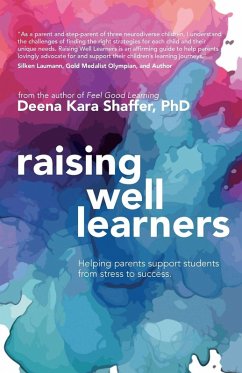
Design Thinking for Digital Well-being
Theory and Practice for Educators

PAYBACK Punkte
87 °P sammeln!
Design Thinking for Digital Wellbeing empowers educators to teach young people how to critically embrace technology in their lives. It provides a pedagogical framework for teaching young people to flourish in a digital society and enjoy digital wellbeing.














